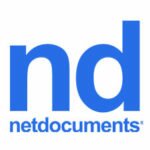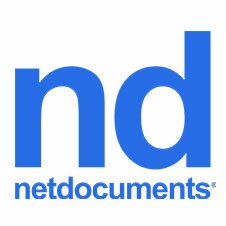NetDocuments: Which parts of court filing can be automated?
If your firm files documents in state or federal courts, there are plenty of ways electronic court filing has likely made your life easier. Yet the process of turning key documents into officially accepted court filings can still be stubbornly manual—especially when compared with the ease of moving data in and out of NetDocuments.
There are opportunities for firms to eliminate this manual work by directly integrating the software they use to store documents with the software they use to file cases. But many litigation departments, unaware that this is possible, still spend valuable time redrafting the same information for filing purposes.
You might be wondering, “How can we make things more efficient?”
We’ll help you answer that question (and more) today. Let’s start by looking at the bottlenecks.
How eFiling Systems Currently Work
While a few U.S. states have only one official eFilingwebsite, many states allow multiple providers to compete for different segments of the court filing market: self-represented litigants, firms that file occasionally, and everyday filers.

A visual breakdown of Illinois’ eFiling system, which allows filers to choose between many competing eFiling service provider websites to submit court filings. Similar ”open” eFiling systems are used in states like California, Texas, Maryland, Indiana, and more.
To ensure access to justice for all who interact with the court, these states typically subsidise one free solution that meets the minimum filing requirements for self-represented filers. But this approach has also allowed for the development of more advanced, professional filing software that can include features like integrated process serving, eSignature management, PDF conversion, and the ability to file similar order types in bulk.
But while more advanced software has been a huge boon for anyone filing court documents, most professional filing software still requires users to adopt completely manual workflows that are not significantly faster than the free option. It’s no wonder, then, why even some BigLaw firms are still scraping by with free software that leaves them with plenty of expensive follow-up work.
Some of these unnecessary tasks include:
- Downloading and organising offline copies of documents. eFiling service providers that can’t directly select documents from your document management system (DMS) require you to constantly create and upload hard copies. This duplicative approach to document management comes with the risk of mixed-up files, outdated versions, and security vulnerabilities.
- Converting documents. Most courts only accept files in a specific PDF format (often PDF-A), and documents often must be text-searchable. NetDocuments’ SetBuilder add-on can combine several documents in different formats into one text-searchable PDF that’s ready for electronic court filing.
- Reacting to court emails. Your filing contacts can’t be available 24/7/365. You can make everyone’s life easier by using a court filing solution that automatically syncs court-stamped copies of filed documents to your DMS. Or, use the CourtDrive NetDocuments integration to trigger a variety of useful tasks from federal ECF notices, such as automatically calendaring key dates, creating custom alerts, and running SSN/background checks on new parties.
- Sending too many emails. ndMail’s direct integration with your NetDocuments files makes it possible to update a document shared in previous emails without sending a new link. All versions of the documents are shared in one record, making your information easier to manage.
It can be easy to underestimate how much these hiccups contribute to reducing the efficiency of your firm operations. But any step that can be automated eliminates the opportunity for a costly mistake, and ensures staff are spending time on high-value tasks rather than low-value data management tasks.
How the NetDocuments x InfoTrack Integration Enhances the Court Filing Process

InfoTrack integration enables users to select documents directly from their NetDocuments matter for state court filing.
Firms with InfoTrack linked to their NetDocuments account can file online documents in any NetDocuments matter to state courts across California, Florida, Illinois, Indiana, Maryland, New York, and Texas.
Documents associate to the related matter, and court-stamped copies automatically sync back to a dedicated folder as soon as they’re accepted by the court. Filers no longer have to chase down documents outside of NetDocuments or hunt for them in their emails.

InfoTrack integration users will see court-stamped documents sync back automatically to a ‘Returned from InfoTrack” folder in their NetDocuments matter.
InfoTrack filers can also send court-returned copies of their documents for immediate process service, with key service information pre-populated from the related eFiling order.
Other legal order types that can be managed using InfoTrack’s NetDocuments integration include:
- Electronic signatures. Add signature fields to any document and distribute to other parties to sign, with full visibility through to completion.
- Court searching. Search millions of lawsuits across the U.S. and receive alerts when new activity occurs on your case, which sync back to your practice management system.
- Rules-based calendaring. Order comprehensive calendar reminders for case actions in thousands of state and federal courts throughout the United States, so you never miss a key deadline.
The demands on legal professionals at every level are increasing, and there is no longer any time to waste on manual processes. InfoTrack and NetDocuments help you work seamlessly by enabling you to skip document downloads (and the security vulnerabilities they create) and file directly from your DMS.
It’s free to create an InfoTrack account; all orders are billed per transaction. NetDocuments users can learn more at infotrack.com/netdocuments or by visiting InfoTrack’s listing in the NetDocuments App Directory.



